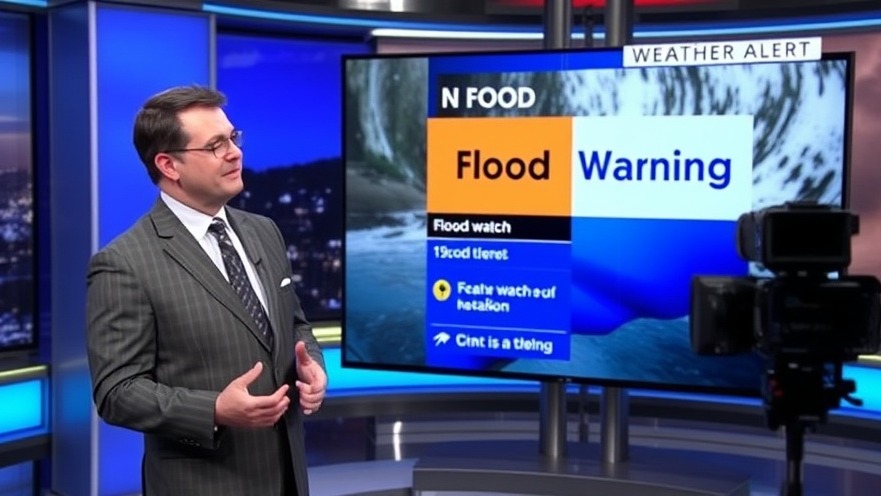
Understanding Flood Alerts: A Lifesaving Necessity
For residents of San Antonio and surrounding areas, understanding the difference between a flood watch and a flood warning is crucial, especially in the wake of recent catastrophic flooding incidents that have tragically claimed lives. The devastating floods this summer serve as a reminder that preparedness can make the difference between safety and danger.
What is a Flood Watch?
A flood watch indicates that conditions are ripe for flooding in a specific area, but it does not guarantee that flooding will occur. This alert gives residents time to prepare in case severe rainfall or other conditions lead to flooding. The watch might cover large areas, hence it’s crucial to remain vigilant. Ensure you have a reliable source of ongoing weather updates like a NOAA weather radio or the KSAT Weather Authority app to stay informed as the situation evolves.
Understanding Flood Warnings: Immediate Action Required
Contrastingly, a flood warning indicates that flooding is either occurring or imminent. This alert is more urgent and signals that immediate action is needed to ensure safety. During a flood warning, residents should stay off the roads, as high water can quickly create dangerous conditions. Remember the phrase “turn around, don’t drown” to avoid attempting to cross flooded areas. If safe, head to higher ground. Keeping emergency kits ready and familiarizing yourself with multiple exit routes in your locality can provide additional protection.
The Importance of Staying Informed
Recent tragedies highlight the dire need for effective communication during severe weather events. Flood watch and warning systems are designed to protect the public by providing early alerts. It's essential for residents to understand these alerts and their implications.
An effective way to stay updated is through community efforts, such as public safety announcements and information disseminated by local authorities. Engaging in community preparedness programs or attending public meetings can also offer insights into flood readiness.
Scientific Insights on Flood Risk
Experts warn that climate change is leading to increased rainfall intensity, raising the risk of flooding in various areas, including San Antonio. A study by the National Weather Service indicates a shift toward more frequent and severe flooding events due to changing weather patterns. This means that residents can expect that flood watches and warnings may become more common, making awareness and preparedness more essential than ever.
Emotional and Community Impact
Beyond the practical implications, flooding can have profound emotional effects on individuals and communities. The losses experienced in the recent floods serve as a grim reminder of what’s at stake. Survivors often face emotional distress, financial challenges, and disruptions to their everyday lives. Communities must come together to support each other in the aftermath, emphasizing the need for local heroes willing to help during emergencies.
Preparing For the Future: Lessons Learned
As we reflect on recent floods, it's imperative to consider lessons learned. Enhance your current emergency plan, ensuring every household member is aware of the steps to take during a flood watch or warning. Simple actions, like having an emergency kit ready and making a family communication plan, can save lives.
What You Can Do Now
Residents of San Antonio must take this information seriously. Stay informed, be proactive, and engage with local news updates regularly. The KSAT channel is an excellent resource for ongoing coverage and alerts regarding local weather events. Additionally, by participating in community preparedness activities, you will not only benefit yourself but also help contribute to a resilient community.
By understanding the meaning of flood watches and warnings, individuals can take the necessary steps to keep themselves and their loved ones safe. Education continues to be our greatest ally in navigating these challenging weather events.
Stay up to date with flood news and local emergency alerts. For more information and updates, connect with your local news sources and weather authorities. Your safety is paramount, and preparedness is only a step away.
 Add Element
Add Element  Add Row
Add Row 



Write A Comment